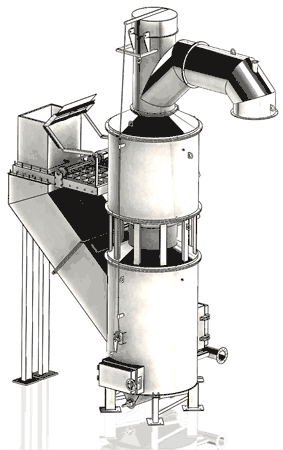 Engineering creativity
Engineering creativity
 Analysis and preparation
Analysis and preparation
 Thrift
Thrift
 Management resources
Management resources
 The checked decisions
The checked decisions
 Continuity of traditions
Continuity of traditions
 A rich experience
A rich experience
 Researches and developments
Researches and developments
 From idea to the embodiment
From idea to the embodiment
 Calculation and control
Calculation and control
Medical waste disposal incinerators
What is medical waste?
The medical waste structure is quite diverse, since all types of garbage generated in healthcare institutions are considered medical waste.
These may include the following:
- food residues;
- blood transfusion systems;
- syringes, infusors, and needles;
- medicines with expired shelf life;
- rubber gloves;
- paper, cardboard, and newspapers, magazines, writing and toilet paper;
- medicine packages;
- medical swabs and bed-clothes;
- cutting tools;
- patients' tissues and body fluids.
The wastes generated at Medical and Preventive Treatment Facilities have various degrees of epidemiologic and environmental hazards, depending on their composition, degree of contamination with biological agents, and pursuant to the sanitary regulations and norms SanPiN 2.1.7.728-99 “Regulations for Collection, Storage, and Disposal of Wastes of Medical and Preventive Treatment Facilities” fall into the following classes:
- Class А. Law-hazard waste: municipal solid and similar waste which had no contact with patients;
- Class B. Hazardous waste: potentially infected wastes, materials, and tools contaminated with excretions, postmortem and surgical wastes, vivarium wastes, etc.;
- Class C. Extremely hazardous waste: materials which are in contact with patients infected with highly infectious diseases, the wastes of microbiological, virological, mycological, chest departments and laboratories;
- Class D. Wastes, the content of which is close to industrial: pharmaceuticals, diagnostic and disinfection products, expired products, mercurial products, utilities wastes.
The wastes of
One may use chemical treatment of medical waste as this technique yields good results; however, it brings about a new problem necessitating the disposal of new chemical products. The latter is labor-intensive and costly.
Today, according to the rules, infected medical wastes are soaked in a disinfectant solution directly before shipment for disposal. This treatment method does not fully resolve the decontamination issue, since the pathogenic flora is already accustomed to many preparations, while the botulism germ is resistant to heating until 600 °C, but shows why the infected waste should be destroyed by high-temperature heating until about 1,000–1,400 °C. Such waste is subject to combustion instead of disposal as recycling of infected medical waste is quite dangerous.
There are specific technical parameters for designing industrial combustion chambers burning homogeneous fuel; there is no such data available for designing incinerators for burning garbage and other types of waste. This can be explained by the fact that garbage furnaces shall ensure satisfactory operation in the most various conditions, with combustion of fuel with the high content of volatile substances and inconstant fuel moisture. The rigid operating conditions of the units related to the specific fuel composition set stringent requirements for their lining.
The furnace lining shall meet the following major requirements:
- ensure high heat resistance (a large number of temperature differentials [ambient – service temperatgure]) related to the operating mode;
- ensure high resistance to infiltration of chemical compounds resulting from combustion to prevent premature destruction of the working lining layer;
- ensure low heat transmission factors in the ambient environment;
- ensure long-term time service indices;
- ensure high maintainability.
Today, it may safely be said that the company's engineers solved the tasks for the selection of materials, selection of the lining diagrams and design.
Our specialists manufactured monolithic linings of 6 organic waste incinerators which successfully passed time tests. We have well-tested solutions and we know how to put them to life. The modular concept of furnace design ensures the shortest repair interval of the units. Pre-heat-treated modules reduce the period of furnaces commissioning after repairs and maintenance.
Keralit is looking forward to mutually beneficial cooperation with all plants and organizations concerned.
For all questions, please contact the Engineering Service.

